Graves’ Disease (Clinical)
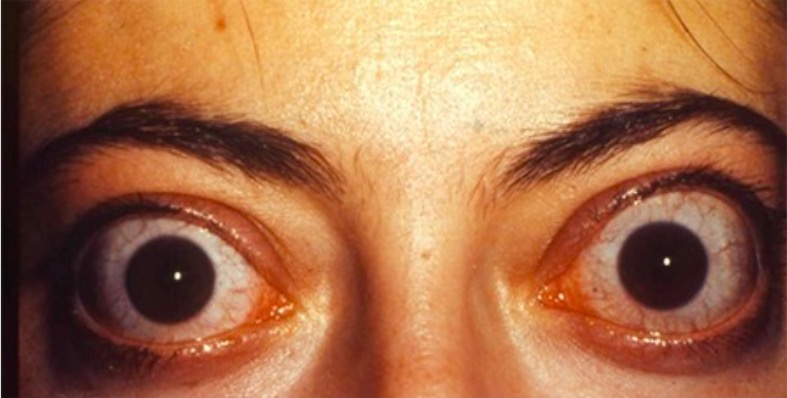
Overview Definition Graves’ disease is an autoimmune disorder in which antibodies against the thyroid-stimulating hormone (TSH) receptors cause the thyroid gland to hyperfunction. The syndrome may have the following features: Epidemiology[4,6,8,9] Risk factors[4-6,8,9] Susceptibility to Graves’ disease is considered to be a combination of multiple factors. Pathophysiology Hyperthyroidism and goiter[4,6] Orbitopathy and myxedema[3,4,6] Clinical Presentation […]
Acute Pancreatitis (Clinical)
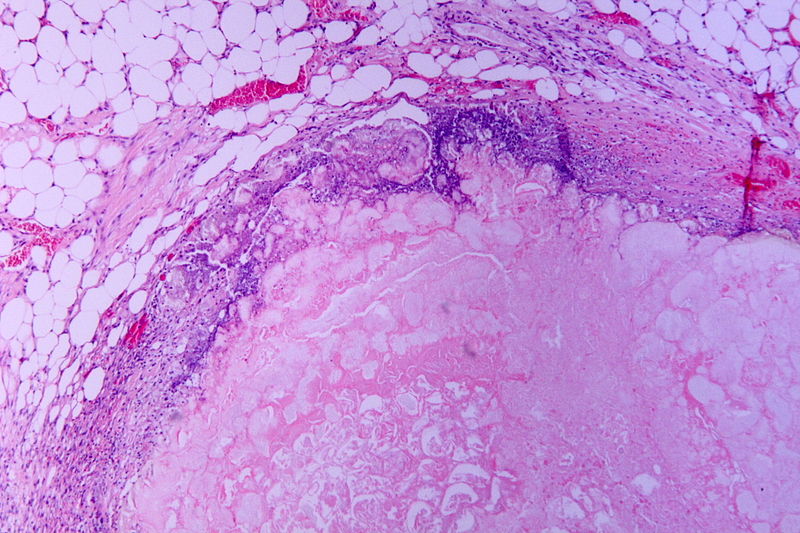
Epidemiology and Etiology Epidemiology[3,14,15] Etiology[1,3,7,11,14,15] Classification Acute pancreatitis is classified according to the Revised Atlanta Classification system, which describes: Table: Acute pancreatitis classification Type Interstitial edematous pancreatitis Necrotizing pancreatitis CT findings Edema is hypodense Heterogeneous contrast enhancement Necrotic areas show reduced contrast enhancement or lack thereof Fluid collection ≤ 4 weeks (no definable wall) Acute […]
Ehrlichiosis and Anaplasmosis (Clinical)
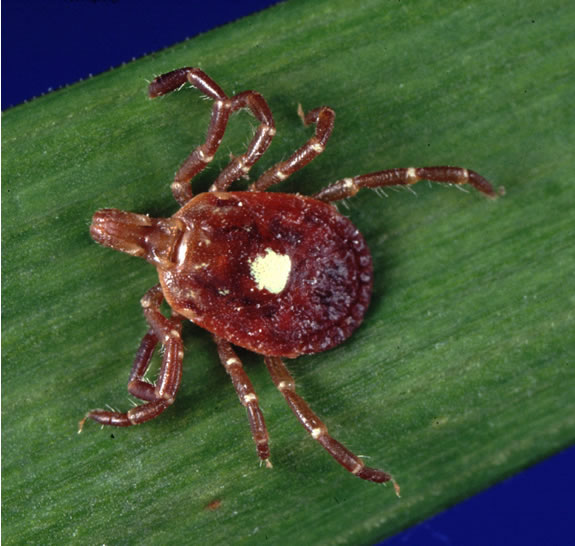
General Characteristics Basic features of Ehrlichia and Anaplasma[4,8,9,12] Clinically relevant species[1,11] The most notable species are: Rare causes of ehrlichiosis in humans: Epidemiology and Risk Factors Epidemiology[8,9,11,13] Risk factors[11,13,14] For ehrlichiosis/anaplasmosis: For severe disease: Pathogenesis Transmission[11,13,14] Reservoirs[5,9,14] A wide range of wild and domestic animals can serve as reservoirs. The most notable are: Virulence factors[10,15] […]
Anal Fissure (Clinical)
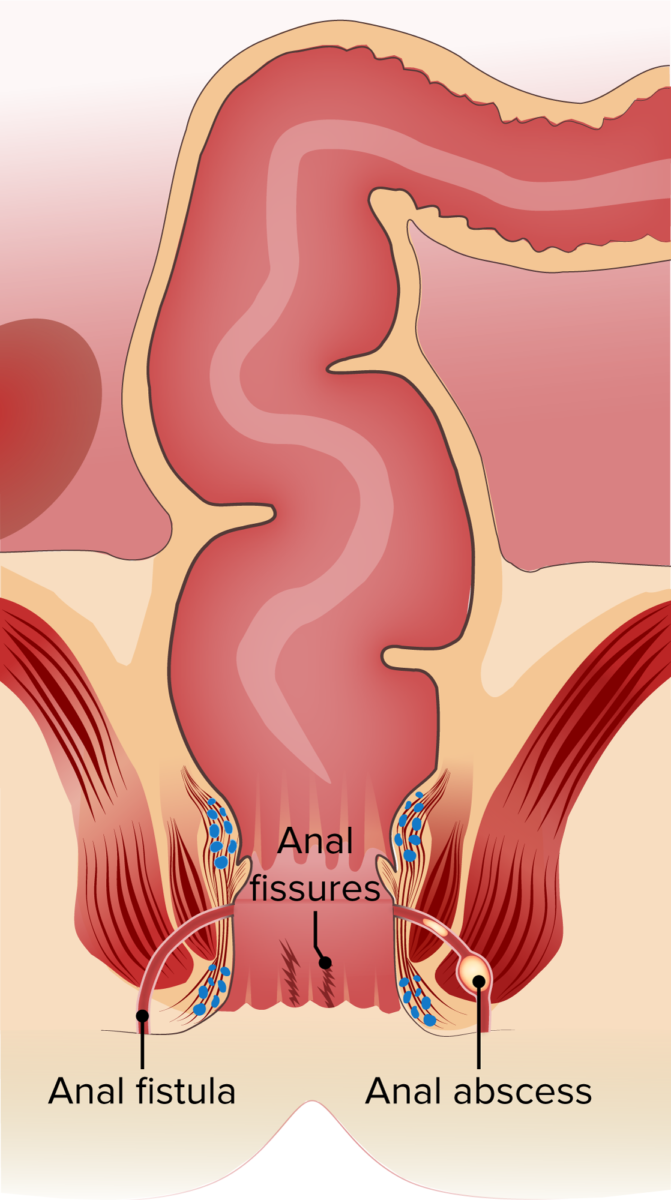
Definition and Epidemiology Definition Epidemiology[1,2,5] Etiology and Pathophysiology Etiology[1–3,6–8] Pathophysiology[1–3,5,8] Clinical Presentation Acute fissure[1–3,5,8] Chronic fissure[1–3,5,6,8] Diagnosis Mnemonic: The D’s of anal fissures: Management The following information is based on the practice guidelines from the American Society of Colon and Rectal Surgeons and the American College of Gastroenterology. Management may be area-dependent; UK guidance on […]
Hemorrhoids (Clinical)
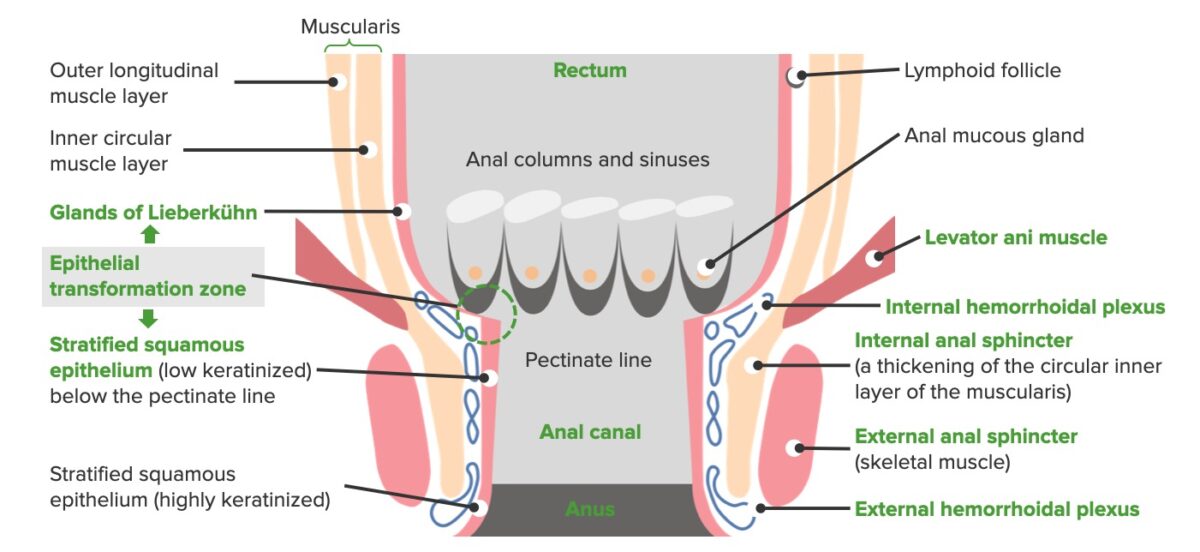
Overview Definition[2,3,6] Hemorrhoids are normal swollen vascular structures in the anorectal canal. Epidemiology[2,3,9] Etiology[2,9,10] Pathophysiology Pathogenesis[2–4,9] External hemorrhoids[2–4,9] Internal hemorrhoids[2–4,9] Clinical Presentation External hemorrhoids[2,3,9] Internal hemorrhoids[2,3,8,9] Diagnosis Physical examination[4–6,9,12] Laboratory studies and procedures Management Management may vary based on location. The following recommendations are based on US and international guidelines. Initial treatment approach Table: Hemorrhoid […]
Appendicitis (Clinical)

Overview Definition Appendicitis is the inflammation of the vermiform appendix. Epidemiology[1,4,5] Etiology[1,4,18] Pathophysiology and Clinical Presentation Pathophysiology[1,4,18] Time course[1,4] Early: Late: Perforation: Clinical presentation[1,4,8,9] Classic: Atypical: Anatomic factors: Diagnosis History[5–9] Physical exam[5–9] General: Abdominal exam: Rectal exam: Pelvic exam: Laboratory studies[2,5,6,9] Alvarado score[2,5,9] Table: Alvarado score Symptoms Migratory pain in the right iliac fossa 1 […]
Approach to Genital Ulcers (Clinical)
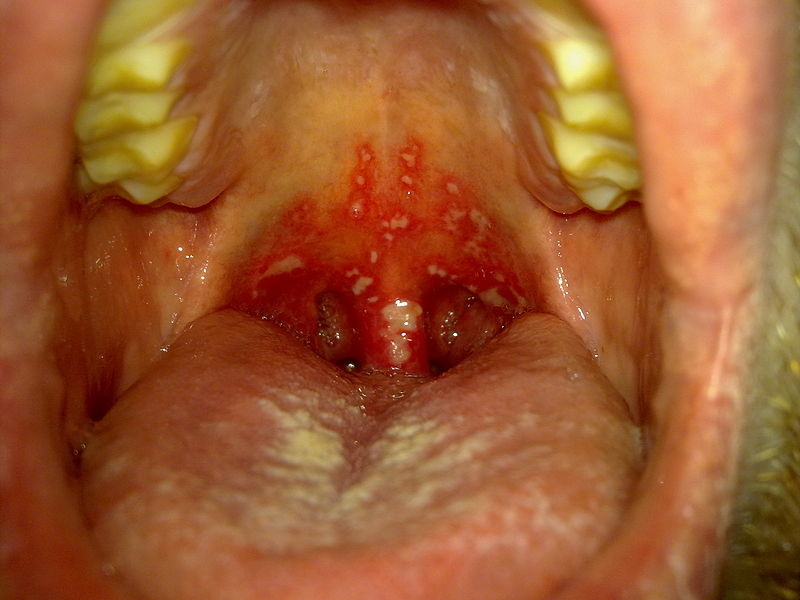
Etiologies, Epidemiology, and Pathophysiology Genital ulcers are most commonly due to sexually transmitted infections (STIs); however, there are numerous non–sexually transmitted etiologies, as well. STIs causing genital ulcers[1–4] Genital ulcers due to other causes[2–4] Table: Characteristics of genital ulcers[1–4] Disease Etiology Incubation period Ulcers painful? Other disease characteristics Genital herpes[14–19] HSV 2‒7 days Yes Recurrent […]
Celiac Disease (Clinical)
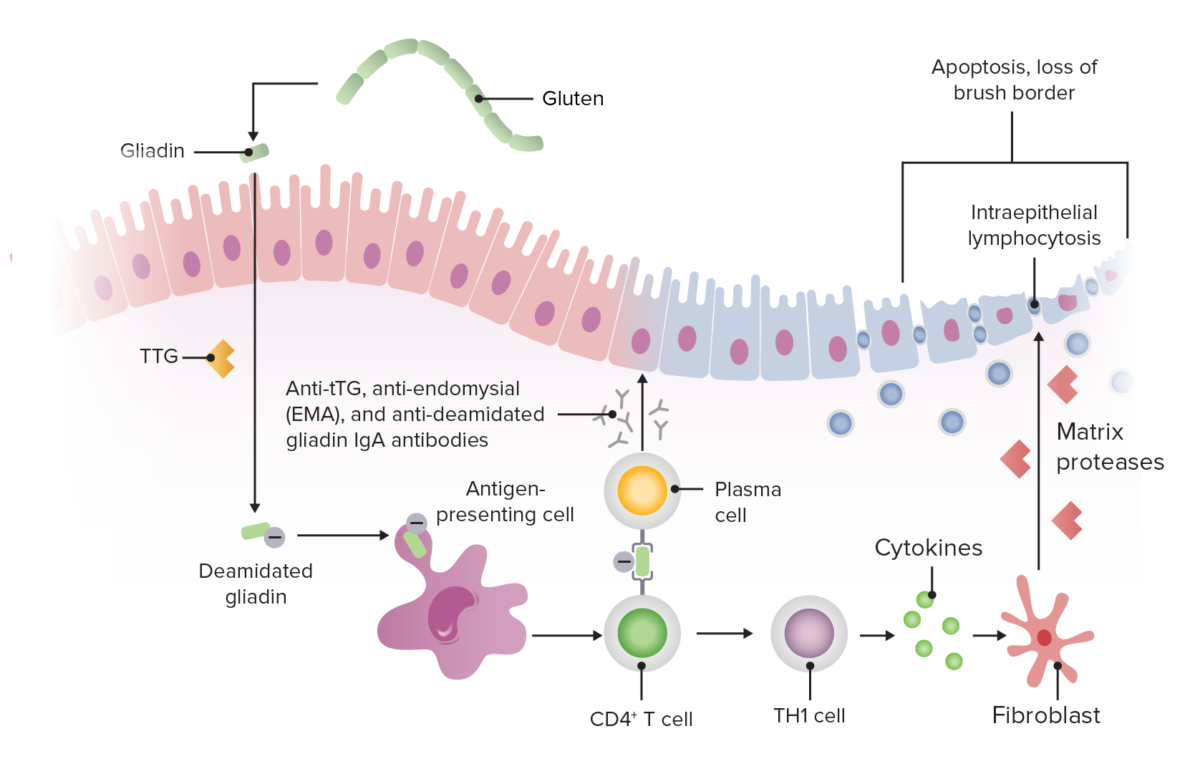
Epidemiology and Etiology Epidemiology[1,2,6,8,12] Etiology[1,2,6,8] Environmental, immunologic, and genetic factors contribute to the disease process: Pathophysiology Gluten peptides trigger the innate immune response in intestinal epithelial cells, leading to T cell–mediated mucosal damage of the proximal small intestine (distal duodenum and proximal jejunum).[2,8] Clinical Presentation Clinical manifestations[1,2,6–8] Gastrointestinal (GI) symptoms: Extraintestinal manifestations: Table: Manifestations and […]
Urinary Tract Infections (UTIs) (Clinical)

Overview Definition Urinary tract infection (UTI) is a pathogenic process that develops when a microorganism (usually bacteria) enters the body through the urethra and travels to the bladder and/or kidneys. Epidemiology[8,9,26] Prevalence: Risk factors[3,7–9,26] Etiology and Pathophysiology UTIs are caused by bacteria, and occasionally other organisms, that ascend into the urinary tract. Escherichia coli[7,8,26] Other […]
Acute Bronchitis (Clinical)
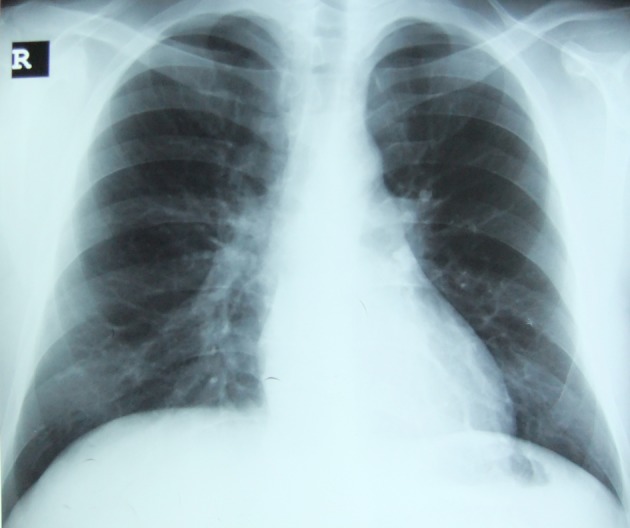
Overview Definition Acute bronchitis is an acute inflammation of the large airways of the lower respiratory tract wherein the pulmonary parenchyma is not affected. Epidemiology[15,16] Acute bronchitis is a very common disease. Etiology[15,16] Pathophysiology Acute bronchitis is characterized by infection and inflammation of the tissue lining the bronchi.[16] Clinical Presentation Acute bronchitis is typically a […]